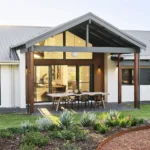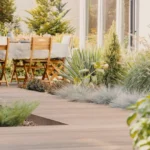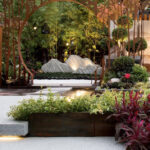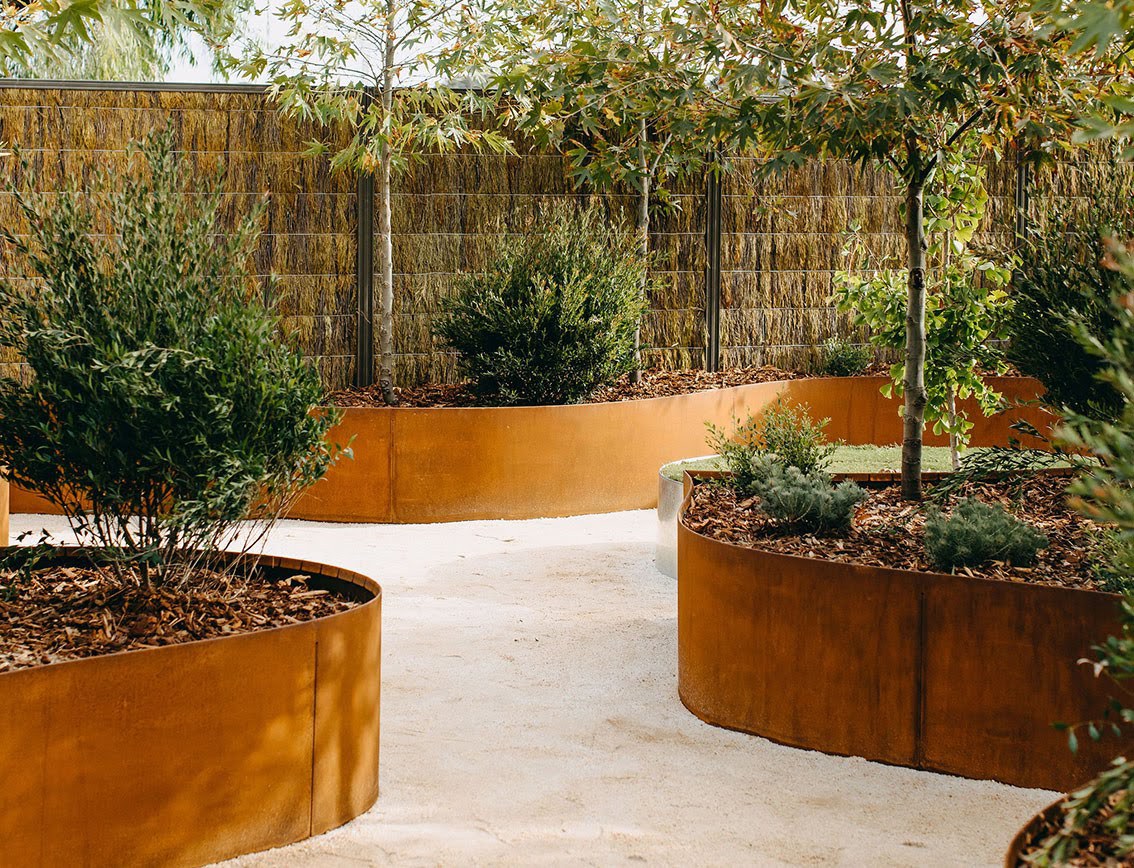
Predictors of Lifespan and Ways to Increase Longevity of Steel Garden Edging
Are you seeking a long lasting, sleek garden edge but concerned about how long it will last? Let’s unpack the key factors at play here so a guarantee is more than just words on paper. We’ll even show you some ways that the lifespan of a steel garden edge can be increased.
The areas to cover for full understanding of this are :
- How Weathering Steel Compares to Mild Steel
- What conditions impact the lifespan of steel
- How rusting occurs in air and below ground
- How to protect vulnerable areas of an edge to increase lifespan
- How to see Lifespan Guarantees
1. How Weathering Steel Compares to Mild Steel
If you look at the leading brands in garden edging you will discover they use a certain kind of steel. It goes under various names, most famously CORTEN(the original) but others might refer to Atmospheric Steel, REDCOR etc. What’s in a name hey? They’re actually all the same and generally can be referred to as Weathering Steel.
Let’s go deeper for a moment to look at the elements found in Weathering Steel. It’s a special alloy containing several alloying elements that contribute to the unique character of Weathering Steel. Phosphorus is the most important contributor to corrosion resistance and has a minimum requirement of 0.055%. It’s the element that slows down rust dramatically. Copper and chromium also play an important role in making the rust stick. The higher than normal strength is achieved by adding manganese, chromium and nickel. Sometimes a small amount of aluminium is added as an oxidizer.
This ‘make-up’ means the behaviour of Weathering Steel in air is different to mild steel. That’s why when flat bar mild steel is used as a garden edge it needs to be quite thick (>4mm typically) to be sure that it lasts.
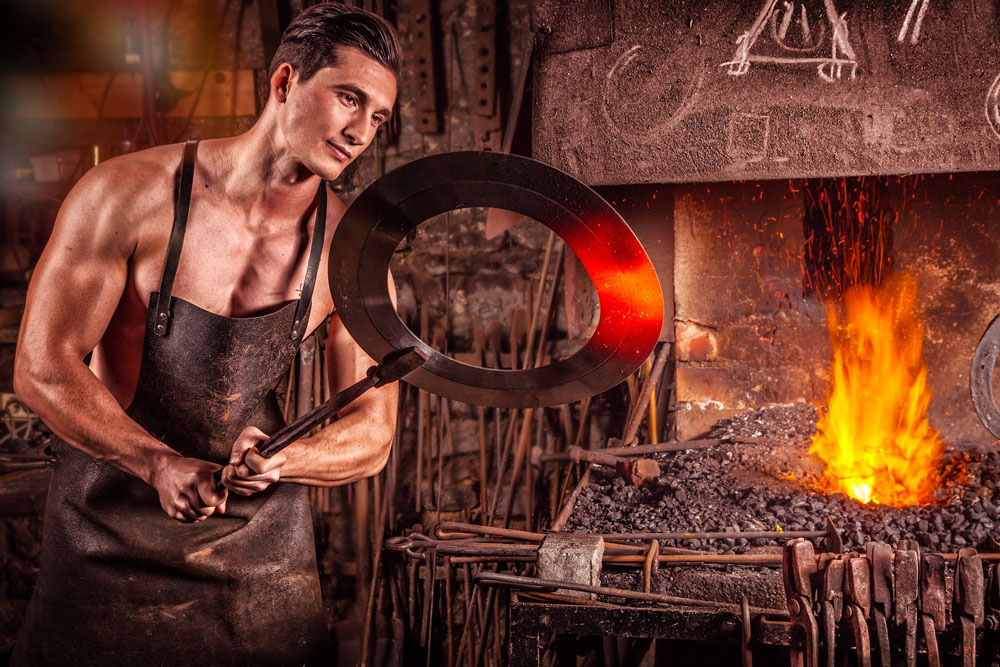
“Looking closely at steel”
2. What conditions impact the lifespan of steel
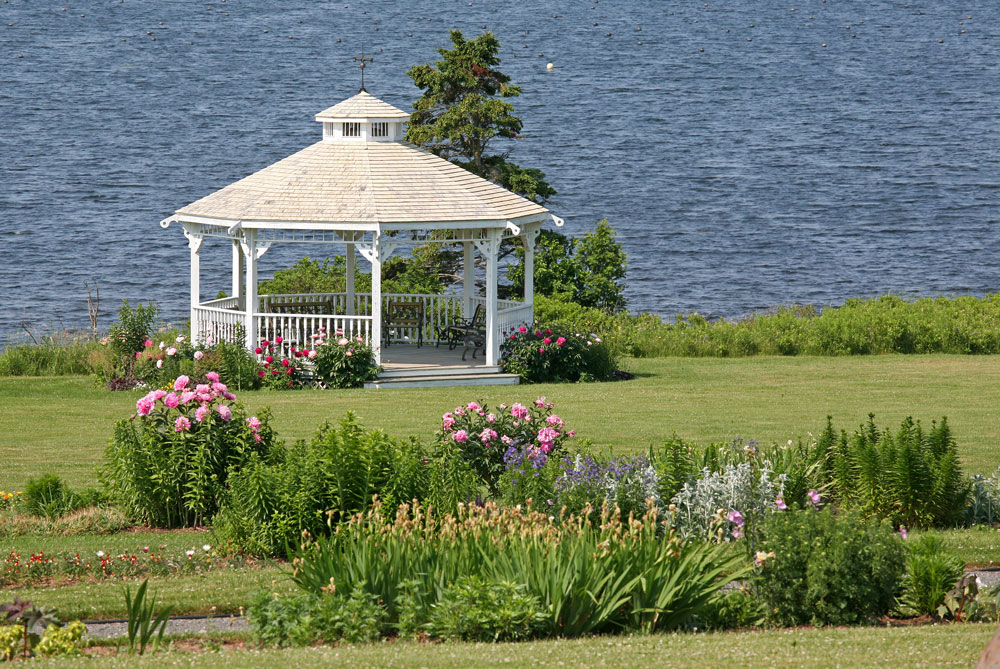
It’s important to understand that the ‘skin’ on structural steel is quite porous. Corrosion on mild steel allows moisture and oxygen through which means it’ll never stop rusting until it’s gone. That’s where the flaking comes from. Weathering Steel is more resistant to corrosion in air because the corrosion layer (patina) is dense and non-porous. Once a rust layer has been established, further rusting is slowed down dramatically. It’ll never stop though, so it will still corrode away over time but it takes a lot longer. So with lifespan in mind, weathering steel is the steel of choice for quality garden edges.
But again let’s take this further. Moisture, air and atmospheric contaminants all encourage rusting. There are certain extreme conditions where weathering steel is vulnerable to rusting at a rate that does not give it time to protect itself with a fine rust layer. We’ve seen high chloride ion concentrations occur in places where edging is close to a pool and areas like the Middle East where waste water recycling is critical to their garden water supplies. This can also be a problem in damp coastal areas where seaspray and coastal fogs can carry high levels of atmospheric salt onto the land. Salt has a hygroscopic effect meaning it tends to absorb moisture from the air so increasing humidity. Why is that a problem for Weathering Steel? Weathering Steel relies on wet /dry periods to develop it’s protective patina. If continuously damp, the alloying elements within that stabilise the surface rust layer find it difficult to produce this protective barrier. The lifespan of any steel is going to be less in areas experiencing these conditions.
3. How rusting occurs in air and below ground
Soil conditions will also affect the lifespan of steel, but with garden edging the focus is mostly on protection in the air. If the part of your garden edging exposed to the air lasts well, you’ll be happy with the lifespan achieved. That said, let’s dig a little…yep, that’s a pun! The rate of rusting in the ground is slowed by lack of oxygen availability and other factors become more important. Water, although an important contributor, isn’t the biggest issue in the ground. Other elements have far more impact such as salinity, acidity and sulphuric levels. In some rare cases, rusting in the ground is worse based on those elements. But in general, steel rusts much faster in the air than it would in the ground. This is why metal relics are only ever dug up, we don’t tend to find them just laying around in the open!
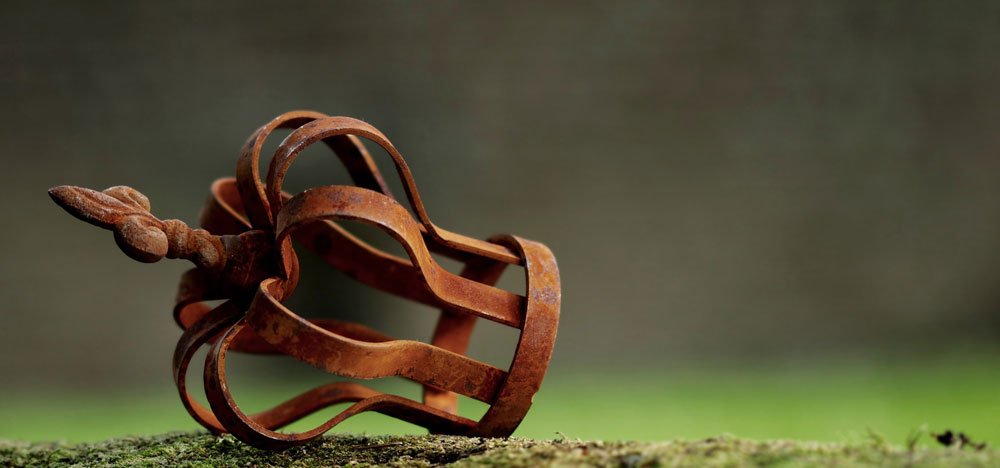
“Look Dad, I found a crown!”
4. How to protect vulnerable areas of an edge to increase lifespan
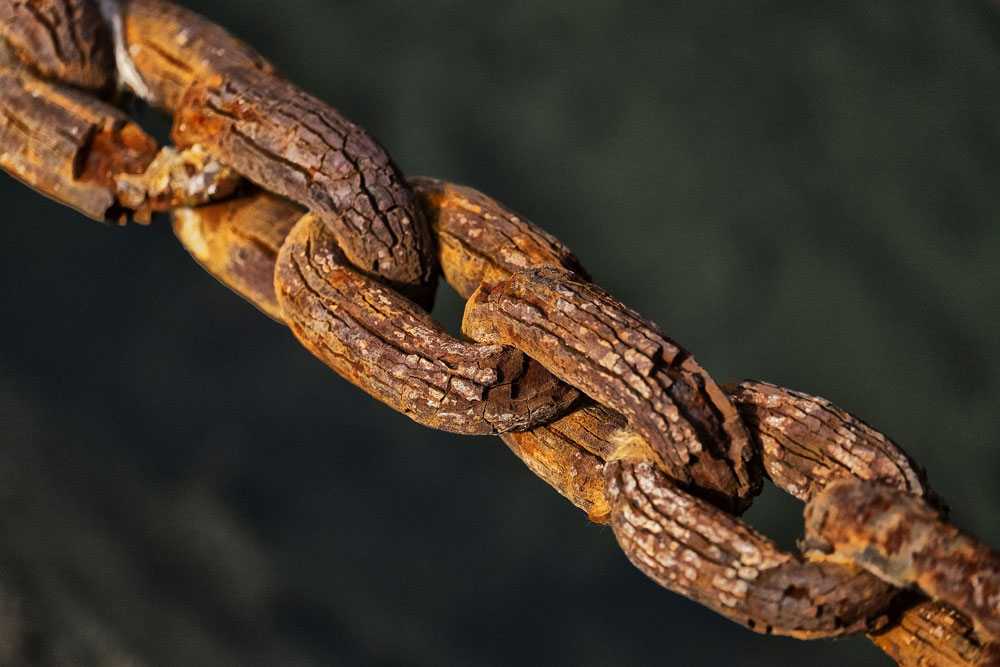
“Which is the weakest link?!”
We’ve looked at how moisture, soil conditions, humidity and what’s in the air are all factors affecting rusting. It’s good to understand where the greatest vulnerability is found. The place of quickest decay is likely to be where ground (soil/mulch/stone fill etc) and air meet. This is the area of greater humidity and moisture with oxygen readily available so it makes sense. What often happens is the ground materials sink down a little as soil compacts or mulches breakdown such that previously buried steel that has not developed an even patina becomes exposed. In this case, a little top up will certainly help.
One action to protect this vulnerable area in particular is to paint the back of the edge with bitumen paint. This makes sense with above ground edging where it is all about showing the bold face off proudly and not burying the edge as you do with inground edging. Given that with the latter application soil sits against the edge on both sides, this action would not be of great value. Consider assisted below ground drainage in circumstances of heavy soil types to increase lifespan some more.
People sometimes use an oil or sealer on Weathering Steel exposed to air after they have the patina developed to the look they want. This tends to darken the colour and if using oils these will need to be reapplied at intervals so it is making work for oneself which Weathering Steel is intended to eliminate. This is less about lifespan and more about the look.
5. How to see Lifespan Guarantees

It’s heartening to see the consistency garden edging companies offer in this regard and that the science on Weathering Steel backs it up. The guarantees are always in the range of 10 – 15yrs for structural integrity. Companies will often carry galvanised or powder coated steel options that protect themselves differently but last for ages too.
You can also ask people with steel edging in their garden about the lifespan they’ve seen. Steel garden edging and the use of weathering steel for this is not a new thing and in many gardens people change the garden design before the edge deteriorates aesthetically. So whilst the guarantees are at the decade mark, the realities in most cases will see this lifespan far surpassed and often this is beyond the life of the garden design and use itself!
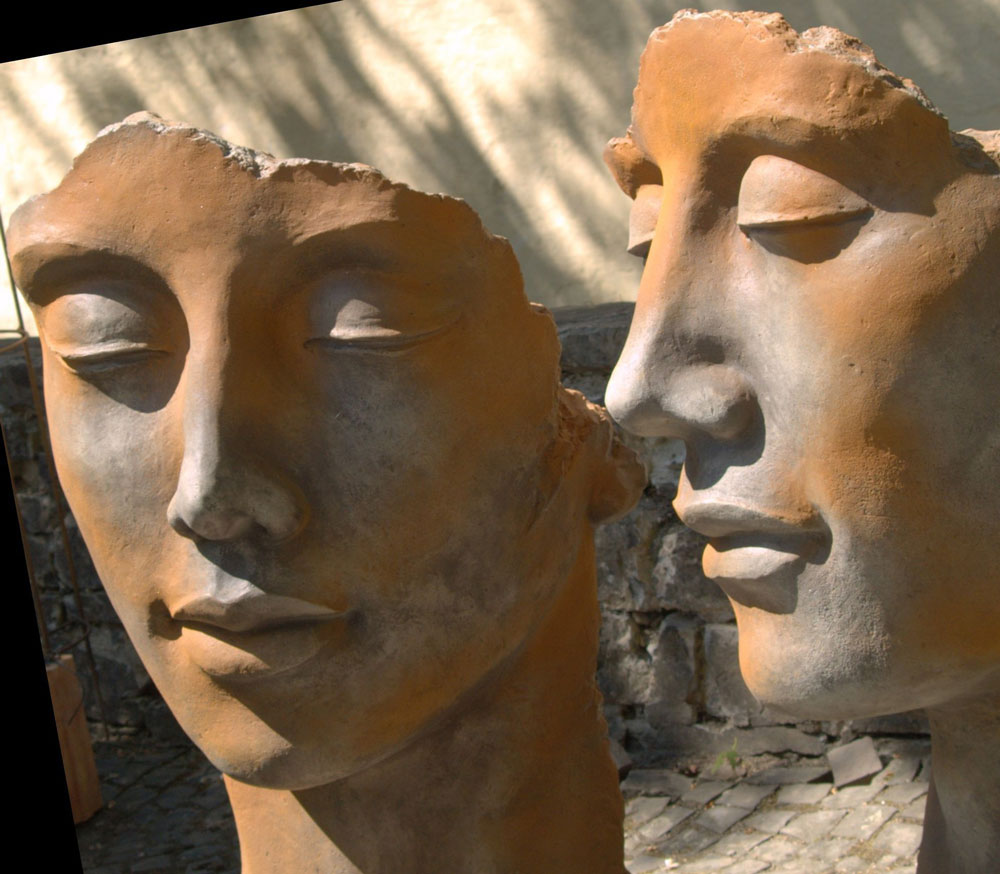
“Aging has a wonderful beauty and we should have respect for that.”
― Eartha Kitt

